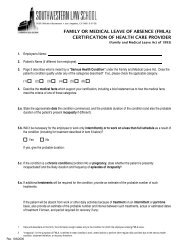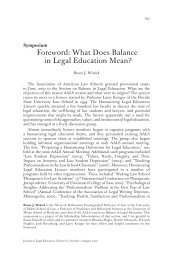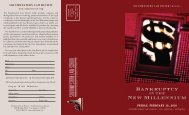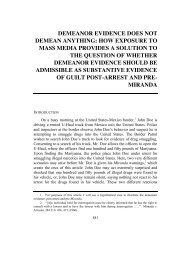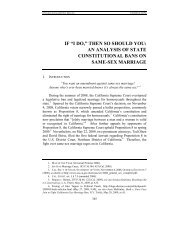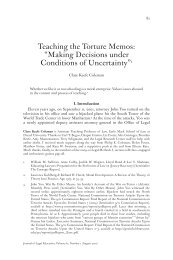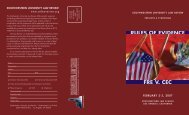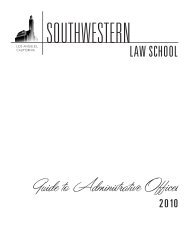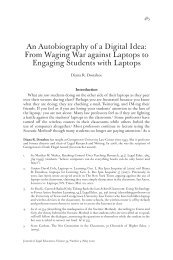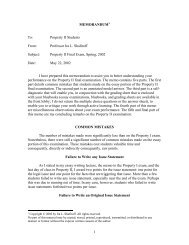What is Art? - Southwestern Law School
What is Art? - Southwestern Law School
What is Art? - Southwestern Law School
- No tags were found...
You also want an ePaper? Increase the reach of your titles
YUMPU automatically turns print PDFs into web optimized ePapers that Google loves.
130 J. INT’L MEDIA &ENTERTAINMENT LAW VOL. 4,NO. 2rity would be damaged by their removal from a specific site—wereoutside the scope of moral rights protection. 85 Kelley did achieve apyrrhic victory when the court ruled on a separate contractual claimthat the park authority should have given him at least 90 days noticeof its intention to remove half of h<strong>is</strong> work—but awarded him nominaldamages of only $1. Kelley appealed against the court’s rulingsagainst him, particularly that h<strong>is</strong> work failed to sat<strong>is</strong>fy the legal ‘originality’test.In 2011 the appeal court 86 reversed the initial court’s judgmentabout the classification of the work under copyright leg<strong>is</strong>lation, decidingthat an artwork “must actually be a painting or sculpture. Not metaphoricallyor by analogy, but really . . . Authors of copyrightableworks must be human; works owing their form to the forces of naturecannot be copyrighted . . . and are not authored or fixed.” 87 Fixation <strong>is</strong>a further requirement of copyright laws in many jur<strong>is</strong>dictions beyond,and including, the US, namely: that an original work must be recordedor fixed in a stable material form—not be transient or ephemeral—soas to be capable of being copied in some material form, and thus qualifyfor copyright protection. The appeal court ruled that “the law musthave some limits; not all conceptual art may be copyrighted”; and thatChicago Wildflower Works was created more by nature than by itsconceiver/planner, and compr<strong>is</strong>ed “inherently changeable organ<strong>is</strong>ms”. 88However, the appeal succeeded on two key <strong>is</strong>sues: that the trialjudge was wrong to hold that the work failed the copyright originalitytest; and that art<strong>is</strong>ts’ statutory moral rights did not apply to site-specificworks, in particular that “an all-or-nothing approach to site-specific artmaybeunwarranted...site-specificart...likeanyothertypeofart...can be defaced or damaged.” 89 That latter dec<strong>is</strong>ion has been hailed as animportant judgment by art<strong>is</strong>ts’ rights campaigners who had, since 2006,sought to reverse the so-called Phillips rule 90 denying art<strong>is</strong>ts’ statutorymoral rights to their site-specific artworks. At the same time, the appealcourt’s judgment took a narrower and more traditional view of what85. Phillips v. Pembroke Real Estate, Inc., 459 F.3d 128 (1st Cir. 2006).86. Kelley v. Chicago Park D<strong>is</strong>t., 635 F.3d 290 (7th Cir. 2011), cert. denied, 132S.Ct. 380 (2011).87. Th<strong>is</strong> ruling was made by the appeal court of its own motion, not followingarguments advanced by the parties in the appeal.88. The appeal also failed on the contract claim: the court held that the ChicagoPark D<strong>is</strong>trict official who had informally allowed Kelley to continue use the parkland (after h<strong>is</strong> formal permit had expired) had no legal capacity or authority to do so.89. Kelley v. Chicago Park D<strong>is</strong>t., 635 F.3d 290 (7th Cir. 2011), cert. denied, 132S.Ct. 380 (2011).90. Phillips, 459 F.3d at 143.



